LEGO Dimensions: UX triumph or tragedy?
LEGO’s reputation is on the line as it enters the toys-to-life gaming arena, says Dan Oliver.
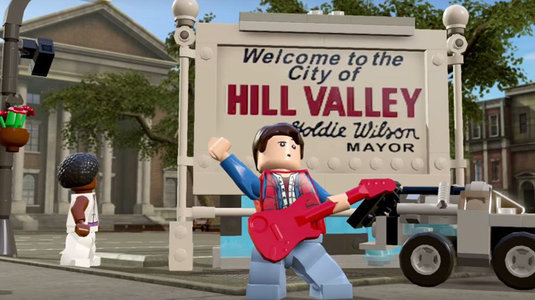
When I first heard the announcement that LEGO was launching a new video game back in April, I had a strange reaction, as initial excitement gave way to a swelling sense of foreboding. But we'll get to that...
If you're a fan of LEGO, or of video games, then you'll no doubt be aware that the end of September marked the release of the much-anticipated LEGO Dimensions. Unlike previous LEGO video games, this is the company's first foray into the toys-to-life genre, where physical portals and characters can be used to interact with the game, enabling you to change characters, solve puzzles, and unlock hidden elements.
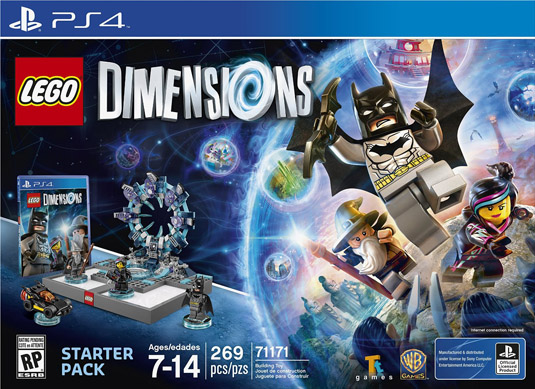
Buy LEGO Dimensions
To date, the toys-to-life genre has been dominated by the hugely popular Skylanders and Disney Infinity series, which both enable you to drop toy characters onto a portal, and have them transported into your playing experience. As the new kid in class, LEGO Dimensions is up against some tough competition.
Love/hate relationship
However, both Skylanders and Disney Infinity are games that are loved and loathed in equal measure. And by that I mean that kids love them, and parents – having to spend a fortune on additional game characters – often aren't so keen. So when LEGO announced that it was entering the toys-to-life market I was torn.
For me, LEGO holds a unique place within popular culture. It's one of a handful of brands, and I'd argue the only toy brand, that no matter who you mention it to will elicit a positive response. "I love LEGO!" "My kids are obsessed with LEGO!" "LEGO is a design classic!" "My kids now play with the LEGO I had as a child!" You know the kind of thing. These responses aren't unique to you and I; they are spoken around the globe.
And so when LEGO announced it was making a toys-to-life game, which some argue is a cynical and exploitative genre, I had a number of concerns. Firstly, I was concerned about the expense. How was LEGO going fare in this notoriously pricey genre? And my next concern, and probably the one that bothered me most, was around UX. The beauty of LEGO is its simplicity. From a series of basic blocks the most amazing models can be imagined into existence, but could LEGO create a video game that was able to capture the essence of what draws multiple generations to this most simple of toys?
Get the Creative Bloq Newsletter
Daily design news, reviews, how-tos and more, as picked by the editors.
Over to you, Josh
To answer these questions, I need some help. I'm not the target market, and I'm not the one who will decide the fate of this game: children will. With this in mind I want to see just how intuitive the game is with absolutely no parental input, short of opening the packaging. So I hand the box to my six-year-old son, with no instruction whatsoever, to see how he fares.
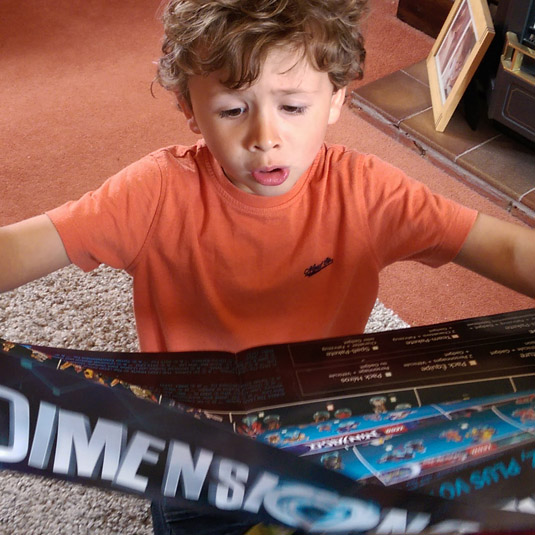
First up, out drops the poster. "Are these toys I can buy for the game, daddy?" "Yes, Josh, and you can tick them off on that poster as we buy them." His response is pithy: "Cool!" (Yup, try telling that to my bank account.)
Eventually, after pulling all the packaging apart he finds a set of LEGO instructions – they are for the portal. I'm pretty sure you're supposed to play the game a bit first, but Josh is already on his way to the kitchen to put the thing together. (I don't know if you've ever tried to take away a fresh set of LEGO from a determined six-year-old, but I have, and I wasn't going there again.)
Here we hit upon the first thing I love about this game: you build. And you build for 20-45 minutes, depending on ability. To defer playing the game for this amount of time, when an out-of-the-box portal could have sufficed, is a bold but perfect move on LEGO's part.
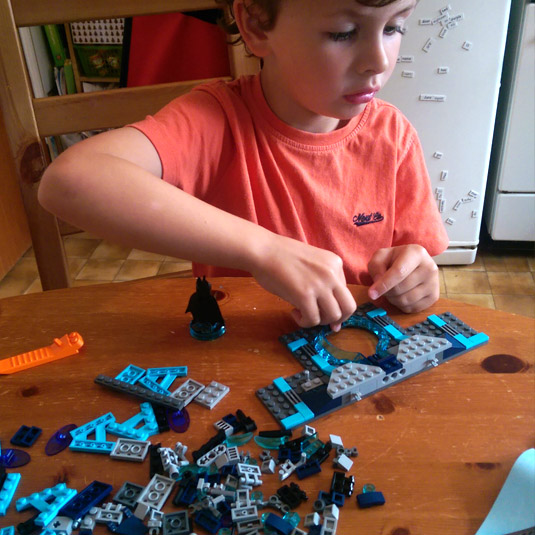
After building the portal it's time to connect to your console and boot up the game (full disclosure: I do this bit). Following the intro scene, you see instructions for building your LEGO, from the portal to the Minifigures that come with the game (Batman, Gandalf, Wyldstyle and the Batmobile).
To introduce you to the game's controls you then create an in-game version of the portal, and this ties the whole thing together. You then place your characters on the portal to enter your first dimension. (Josh found this fairly intuitive, having played previous LEGO games.)
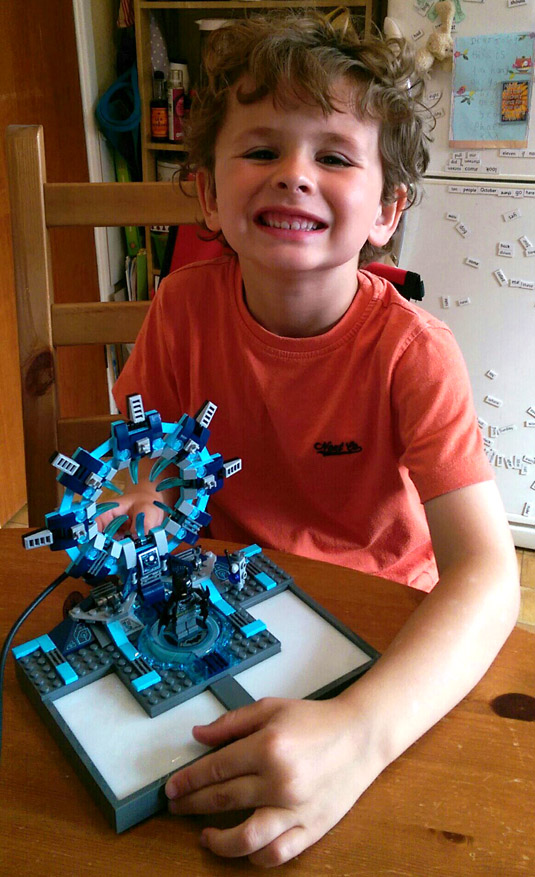
At this point it's worth noting that this is not a game review, and if you want an in-depth overview then please head over to our sister site GamesRadar. But what I can say is the following: The story is brilliant. Starting off in a random way (you're dropped into Oz), and it gets even stranger as you then enter the world of The Simpsons. But this random nature begins to make sense, as you realise that the heroes from each of the 14 different worlds/franchises must come together to defeat an arch enemy.
Portal of power
As you progress through the story, the full scope of the portal becomes apparent. Any child familiar with the toys-to-life genre will quickly realise that putting characters on the portal transports them into the game. However, where LEGO Dimensions takes things to the next level is via the character combinations that the portal can support (up to seven players at one time). Also, as the game progresses, you realise that in-game puzzles need to be solved via the portal, which lights up in different colours (which you then have to match within the game).
To begin with Josh just places random characters on the portal, not really making the connection, and it takes him a while to realise he needs to match up the portal with what displays on screen. But once he does, the achievement he feels is something I haven't seen via other games of this nature. It's a pleasure to watch.
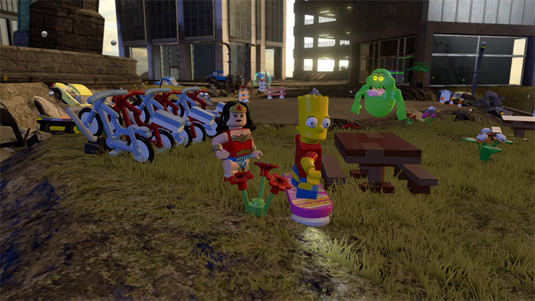
But there are also downsides. As you enter worlds, you find plenty of areas and tasks that can't be completed without purchasing level packs. And sadly, there are no Marvel or Star Wars characters for (obvious reasons). But with the likes of Back to the Future, The Simpsons, Doctor Who, and Scooby-Doo to dip into, there's plenty to keep kids engaged, and a huge amount of effort has gone into enriching these worlds.
Extra packs can be purchased for around $30 (£20), and there's no escaping the cost: it's going to get expensive. But the opportunity to unlock new areas will extend play time and value, and there has been a commitment to support the game with new packs and fresh, downloadable content until 2018 (at least). Add to this the fact that LEGO Dimensions uses standard LEGO, which can be played with outside of the game, and it does mitigate some of the cost. And you'll never be short of stocking fillers at Christmas!
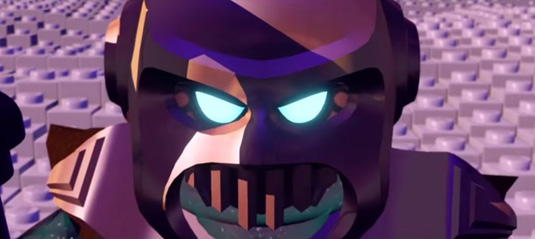
And the UX? Well, as you may have gathered, it's a triumph. From the second you open the box you engage with the game, and the decision to have players build their own portals – despite seeming obvious to some – is a master stroke.
The game's developers, Traveller's Tales, have stepped up the gameplay from previous LEGO offerings, and the integration of the portal is handled in a considered and intuitive way, making LEGO Dimensions the first game that truly blurs the boundaries between playing in a physical and virtual environment. Foreboding? I don't know what I was worried about!
Liked this? Read these...
- How to design the best business card
- 12 inspiring design toys for your desk
- Download the best free fonts

Thank you for reading 5 articles this month* Join now for unlimited access
Enjoy your first month for just £1 / $1 / €1
*Read 5 free articles per month without a subscription

Join now for unlimited access
Try first month for just £1 / $1 / €1

Over the last 20 years, Dan has edited a number of print magazines and websites, including Computer Arts, 3D World and ImagineFX, and has written for publications including the Sunday Times, the Guardian, the Manchester Evening News, Manchester United Magazine, T3, and many more. He has also worked as the digital editor of Creative Bloq's sister magazine, Wallpaper*.
